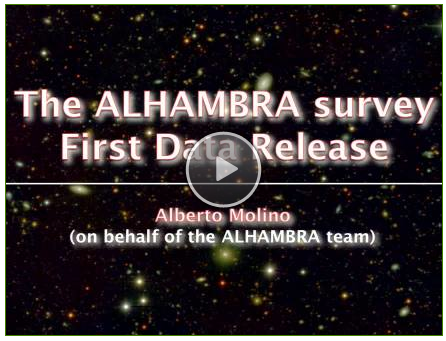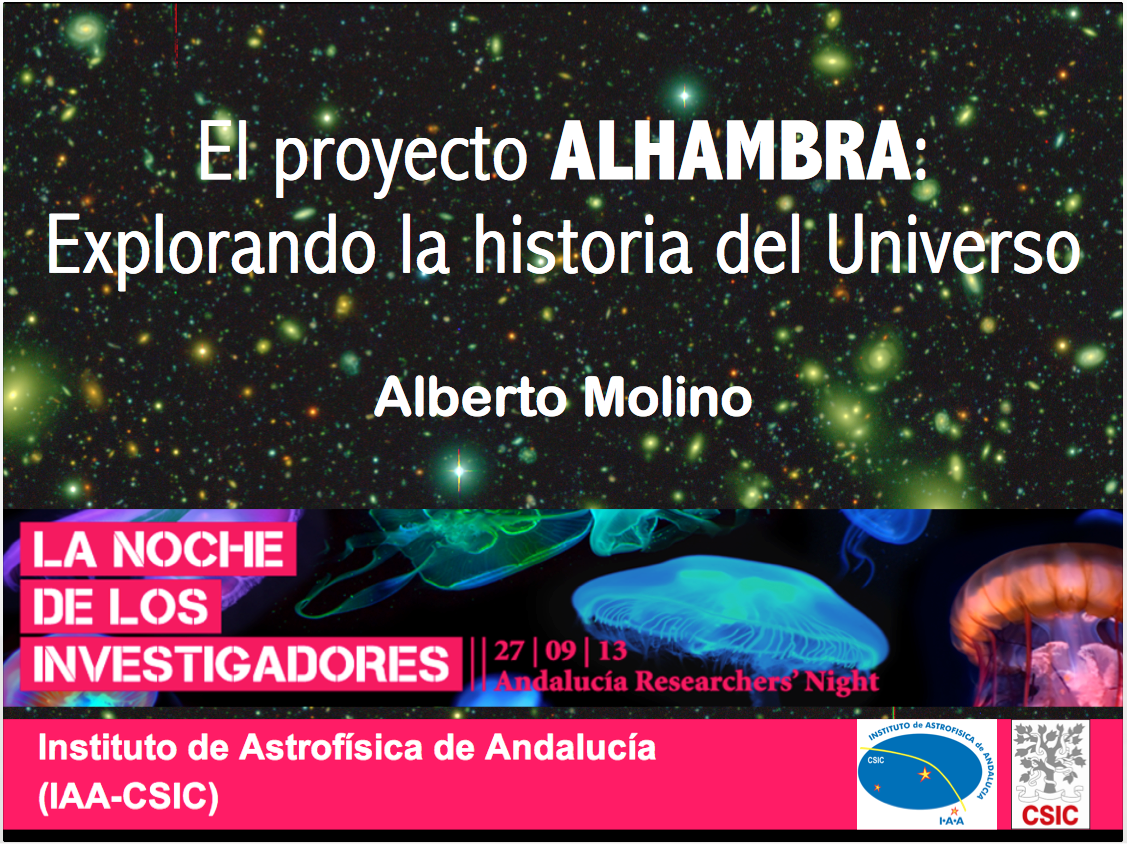Multimedia
Posters
The ALHAMBRA Survey: Bayesian photometric redshifts for 3 deg2.
Alberto Molino, CosmoRENATA, Valencia, 2013
Presentations
A 13.000 millones de años luz. La galaxia que batió todos los records.
Alberto Molino, Museo de la Ciencia y el Cosmos, Tenerife, 2013
Exploring the z~10 Universe through Massive Cosmic Lenses
Alberto Molino, Institut Valencia Investigacio Cooperativa en Fisica Avanzada, Valencia, 2013
Videos
- Seminar at the IAC. The ALHAMBRA survey: First Data Release. October 10th, 2013
Presentation at the Instituto de Astrofisica de Canarias (IAC) the ALHAMBRA survey First Data Release by Alberto Molino.

- La noche de los investigadores (The research's night) - IAA/CSIC - Granada - 27/09/2013
La Noche de los investigadores (Researcher's Night) es un acontecimiento europeo que tendrá lugar simultáneamente el próximo 27 de Septiembre en diversas ciudades de todo el continente. El evento, basado en pequeños "miniencuentros" tiene como objetivo principal el acercamiento entre el público en general y los investigadores de un modo informal y lúdico, así como destacar el impacto de su trabajo en nuestra vida cotidiana y promover las carreras investigadoras.
Alberto Molino presenta el Miniencuentro: El proyecto ALHAMBRA: Explorando la historia del Universo. (Ficha)


- El proyecto ALHAMBRA - IAA Webpage - Jun/2013
Alberto Molino (IAA-CSIC) nos explica la importancia astronómica del proyecto ALHAMBRA: https://www.iaa.csic.es/prensa/se-publica-el-oro-de-alhambra-el-catálogo-definitivo-para-el-estudio-de-la-evolución-del-uni
- USP Conference: Cosmology, Large Scale Structure and First Objects USP Sao Paulo, Feb 2013
In this talk, Narciso “Txitxo” Benítez (Instituto Astrofisico de Andalucía, Spain) explains how photometric redshifts of galaxies and other extragalactic objects have revolutionized cosmology, and will continue to do so.
Part 1:
Part 2:
Download the PDF of the presentation on Publications section.
- Ciclo Lucas Lara: La galaxia más lejana Granada IAA-CSIC, Jan 2013
In this talk, Alberto Molino (Instituto Astrofisico de Andalucía, Spain) introduces the Gravitational Lensing Effect and explains the discovery of the most distant galaxy (known) in the Universe (z~11).
